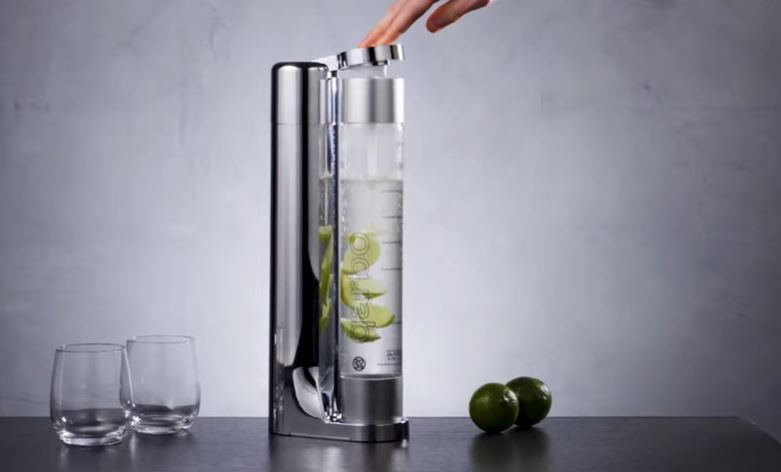We share with you the best SodaStream alternatives the market has to offer.
Home soda makers have slowly but surely become pretty popular in recent years, and there’s a good reason for it. A handy home soda maker allows you to make plain or flavored carbonated soda water from the tap or filtered water, a splash of juice, and commercial flavoring products with the push of a button.
While SodaStream does indeed have the largest market share and plenty of models to choose from, there are other choices that we think are worth your attention and, of course, your money.
SodaStream Alternative FAQs

How do soda makers work?
Soda makers work by injecting carbon dioxide into the water to produce effervescence, making seltzer; not to be confused with club soda, soda water, or mineral water, which contain salts and minerals, or tonic water, which contains sweeteners and quinine. Are you hesitant about tonic or mineral water? Please find out the difference between them; read our Tonic Water vs. Sparkling Water article.
What should a good soda maker do?
At its simplest, a good soda maker should easily add enough carbon dioxide to produce water with a zippy, Perrier-like fizz.
What should you look for when buying a soda maker machine?
- Functionality: How simple is it to assemble and operate? Can you choose varying levels of carbonation? Soda makers make it easy to choose and adjust the level of carbonation. While some people may prefer seltzer with a light fizz, others like a more robust, nose-tickling beverage, and it’s nice to have a machine that can do both.
- Carbonation style. Most soda makers on the market use a carbon dioxide (CO2) cylinder to carbonate your water and beverages.
Before buying, check to see if your model includes a CO2 cylinder to get started. Not all do, so you may need to purchase one separately. - Output: How well does the machine make carbonated water? How much soda does each bottle have? You’ll find both electric and manual countertop soda makers. Manual models are more portable and can be used anywhere without worrying about having access to an electrical outlet.
- Some electric models have settings for various fizz levels, and the carbonation process is hands-free. In contrast, manual models require you to press a button to achieve your preferred amount of carbonation.
- Size. Countertop units can usually accommodate larger CO tanks; this way, you won’t need to replace them as often; while smaller models are perfectly sized for stashing on a small bar cart or tucking into a picnic basket, or taking to a party.
- Bottle material. Most soda maker water bottles or carafes are made from plastic. If you’d like to avoid plastic, look for a soda maker that comes with a glass bottle. Just be aware that models with glass bottles tend to cost more than their plastic counterparts.
- Convenience: Is the soda maker easy to clean? Are the bottles dishwasher safe?
Which carbonating method is better?
Siphons and handheld soda makers use one-time CO2 cartridges that are good for carbonating only about one liter of water. These alternative carbonating methods don’t allow you to adjust the level of carbonation, and we’ve found that they don’t make especially fizzy water. They also create more waste, so we’ve decided to skip them in subsequent tests after initially trying a couple.
Can you carbonate flat drinks with a soda maker?
Yes, if your soda maker is designed to carbonate liquids other than water, then it can also be used to add bubbles back into flat soda or beer.
Not all soda makers are designed to carbonate beverages other than water, though, so be sure to check your product manual first.












